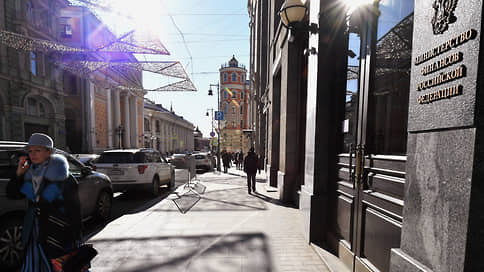Income surplus – Newspaper Kommersant No. 52 (7497) dated 03/28/2023
[ad_1]

Unlike the federal budget, which was closed with a huge deficit of 3.3 trillion rubles, the consolidated budgets of the Russian regions “around the circle” at the end of 2022 turned out to be in a small, but still surplus – in the amount of 50 billion rubles, follows from the published article. Tuesday operational review of the Accounts Chamber. At the same time, most regions turned out to be in deficit – 50, surplus – 35. Transfers from the center in the difficult 2022 grew surprisingly modestly – by only 9%, that is, the regions mostly managed on their own. Their income, against the background of a modest result of income tax collections, was “pulled out”, first of all, by the personal income tax.
The results of the execution of regional budgets for the year are summed up with a significant delay – the Ministry of Finance has not yet fully reported on them, but this is done by the Accounts Chamber in the operational review published today. As follows from these data, despite the tightening of sanctions and the complexity of the first year of the military operation, the consolidated (regional plus local) budgets at the end of 2022 were executed with a surplus of 50 billion rubles.
Revenues amounted to 19.668 trillion rubles. (plus 12% by 2021), expenses – 19.618 trillion rubles. (plus 16%).
The total surplus of 50 billion rubles is incomparably less than was recorded in 2021 (then it amounted to 661 billion), but much better than it was in the “covid” 2020 with its deficit of 677 billion. However, the total average figure reflects the financial condition of specific regions rather conditionally. It is more significant that 50 out of 85 Russian regions ended up with a deficit last year (there is no data on the annexed territories). Accordingly, 35 constituent entities of the Russian Federation are in surplus (state auditors also take into account the budgets of the city of Baikonur and the federal territory “Sirius” – they are also in the black).
Two-thirds of the total surplus came from just five traditionally “prosperous” regions:
- St. Petersburg (119 billion rubles),
- Sakhalin Region (58 billion),
- Moscow (55 billion),
- Kemerovo region (46 billion),
- Yamalo-Nenets Autonomous Okrug (44 billion rubles).
Thus, these five provided the final surplus result to a large extent. Interestingly, unlike the “gas” Yamal, the “oil” Khanty-Mansiysk Okrug is not on the list of surplus regions: Khanty-Mansi Autonomous Okrug ended the year with a deficit of 14 billion rubles.
The five most deficient regions (the ratio of the deficit to tax and non-tax revenues, excluding transfers):
- Dagestan – 36%,
- Tuva – 27%,
- Chukotka – 24%,
- Murmansk region – 24%,
- Chechnya – 22%.
This list is similar to the list of the most subsidized regions, but does not completely repeat it – the highest share of financial assistance from the center in income was in Ingushetia (83%), Chechnya (81%), Tuva (81%), Dagestan (75%) and Karachayevo -Circassia (72%). The Crimean budget is subsidized by the center by 66%, Sevastopol – by 65%. In general, the amount of interbudgetary transfers to regions increased by 9% compared to 2021, to 4.2 trillion rubles. The share of these transfers in the income of the regions is 21.5%.
Their tax and non-tax revenues thus amounted to 78.5% – 15.4 trillion rubles. Traditionally, regional budgets are filled with two main taxes for them – on profits and on personal income. In 2022, their income dynamics was different. Income tax was collected very unevenly. In the first half of the year, receipts grew rapidly, but starting from July, the dynamics turned negative, so that at the end of the year the growth was only 3.5%. In total, 4.7 trillion rubles were collected. Basically, the tax grew in regions with a specialization in the extraction of gas, coal, oil and the chemical industry. Revenues from metallurgists, automakers and from the pharmaceutical industry have fallen. The share of income tax in tax revenues is 33%.
Personal income tax receipts grew better – plus 16%. In total, they collected 5.6 trillion rubles. The share of this tax in income is 39%. Personal income tax collections fell only in two regions: by 10% in Tuva and by 25% in Dagestan (according to the joint venture, “in connection with the deregistration of a large taxpayer”, we note that businessman and senator Suleiman Kerimov was previously considered such).
[ad_2]
Source link






